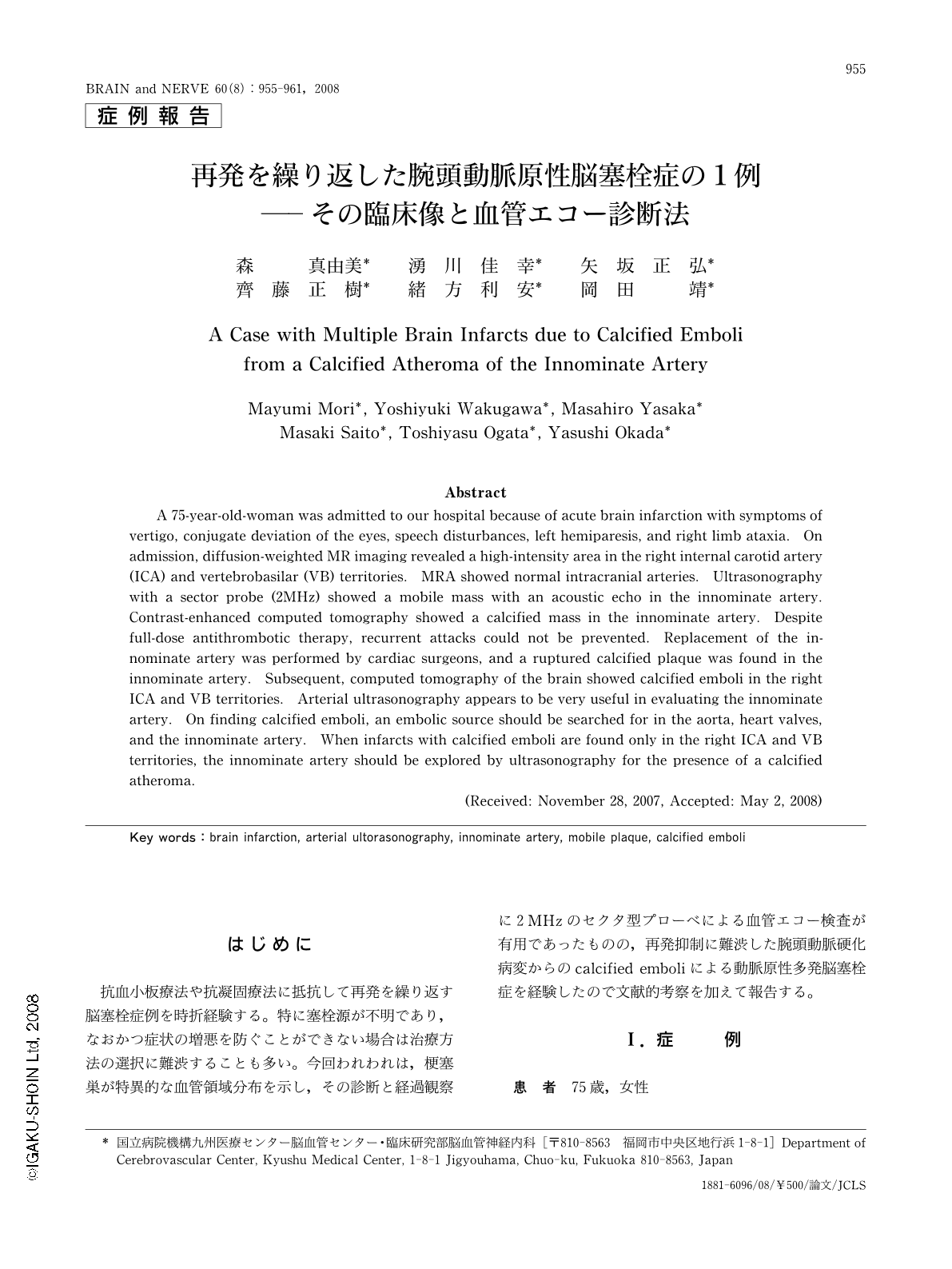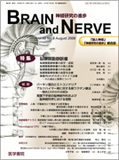Japanese
English
- 有料閲覧
- Abstract 文献概要
- 1ページ目 Look Inside
- 参考文献 Reference
はじめに
抗血小板療法や抗凝固療法に抵抗して再発を繰り返す脳塞栓症例を時折経験する。特に塞栓源が不明であり,なおかつ症状の増悪を防ぐことができない場合は治療方法の選択に難渋することも多い。今回われわれは,梗塞巣が特異的な血管領域分布を示し,その診断と経過観察に2MHzのセクタ型プローベによる血管エコー検査が有用であったものの,再発抑制に難渋した腕頭動脈硬化病変からのcalcified emboliによる動脈原性多発脳塞栓症を経験したので文献的考察を加えて報告する。
Abstract
A 75-year-old-woman was admitted to our hospital because of acute brain infarction with symptoms of vertigo, conjugate deviation of the eyes, speech disturbances, left hemiparesis, and right limb ataxia. On admission, diffusion-weighted MR imaging revealed a high-intensity area in the right internal carotid artery (ICA) and vertebrobasilar (VB) territories. MRA showed normal intracranial arteries. Ultrasonography with a sector probe (2MHz) showed a mobile mass with an acoustic echo in the innominate artery. Contrast-enhanced computed tomography showed a calcified mass in the innominate artery. Despite full-dose antithrombotic therapy, recurrent attacks could not be prevented. Replacement of the innominate artery was performed by cardiac surgeons, and a ruptured calcified plaque was found in the innominate artery. Subsequent, computed tomography of the brain showed calcified emboli in the right ICA and VB territories. Arterial ultrasonography appears to be very useful in evaluating the innominate artery. On finding calcified emboli, an embolic source should be searched for in the aorta, heart valves, and the innominate artery. When infarcts with calcified emboli are found only in the right ICA and VB territories, the innominate artery should be explored by ultrasonography for the presence of a calcified atheroma.

Copyright © 2008, Igaku-Shoin Ltd. All rights reserved.


